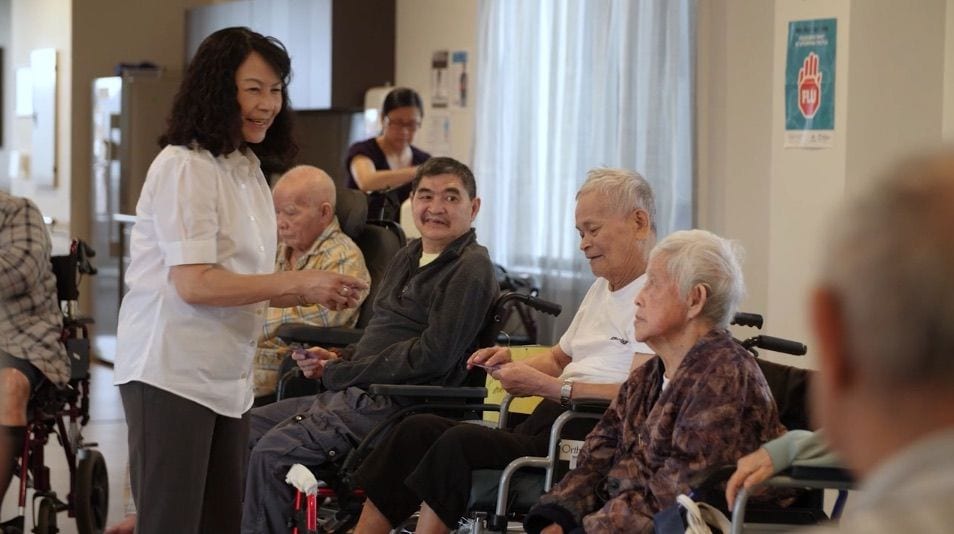
The term ‘person-centered care’ gets thrown around a lot within the mission statements and core values of aged care providers.
This term relates to a process that involves listening, thinking together, coaching, sharing ideas, and seeking feedback, to optimise the level of resident/patient care.
For a process like this to be feasible, there must be a very clear and ongoing line of communication between both the care staff and the residents of each facility.
As we grow older we become more vulnerable, often leading to a deterioration in independence and a reliance on others.
Unfortunately for some elderly people, having the ability to converse with someone in a meaningful way can be difficult and this is compounded even further if there are language barriers involved.
Language barriers can be a common occurrence for those living in Australian nursing homes who happened to be born on foreign shores.
The complications that come from this breakdown in communication have prompted a small percentage of aged care facilities to take a modern approach to care.
The Mekong facility in Cairnlea founded by the Indochinese Elderly Refugees Association is an innovative example of the depth of thinking required to ensure that person-centered care is available to all Australians.
The facility is mostly staffed by employees with a Vietnamese background, is fitted with traditional Vietnamese decor and provides a Vietnamese menu for its typically Vietnamese resident community.
Thuy Tran, Clinical Care Manager, at Mekong Cairnlea Vietnamese Aged Care, knows all too well the effects that culturally specific aged care has on the wellbeing of her predominantly Vietnamese resident base.
She also knew that having her staff trained to a high standard would be the key to complementing the experiences that her residents have within this state-of-the-art facility.
The responsibility of crafting a style of training that would be specific to this contemporary environment fell to the people at Vative Healthcare.
“Vative Healthcare help us to provide education to staff because we want our care to meet all of the new standards. We started with Vative Healthcare recently and have begun a new program which is really focused on person-centered care,” said Thuy.
“I used to work at other aged care facilities but this is the very first one that provides culturally specific care, that I’m aware of.”
There was no blueprint for providing quality training for Vietnamese staff that care for predominantly Vietnamese residents in Australia, so Vative Healthcare’s CEO Carmie Walker, began doing the type of research required in order to create a blueprint of her own.
“We as a company did extensive research into Vietnamese culture and studied the journey of some of this country’s earliest Indochinese refugees. Our goal was to listen and understand first before we tackled the methodology behind the training,” said Carmie.
“This was a unique task but also a unique opportunity. This new, diverse style of resident care required us to adapt our training methods. This progression has resulted in new approaches to training and coaching that we can apply to many other aged care providers.”
“The training we are now able to deliver for Mekong Cairnlea ensures that the residents are in the care of staff who have the highest standard of process training and knowledge to complement their ability to communicate and care for residents accordingly,” she said.
Having staff that utilise best practice procedures increases the levels of both safety and comfort, allowing them to work on building bonds with residents as opposed to second-guessing the methodology and procedures of their required duties.
These bonds between employees and residents are evident in a place like Mekong, and this positive environment has resulted in Care Manager Thuy Tran having an affinity with the facility itself that most people do not have with their workplace.
“I always feel a connection working here, every time I come to the door I feel like this is not just a workplace for me, I feel like this is a second home.
I come here and live for eight hours during the day and then after 5 pm I go back to my other home,” said Thuy.
Positive working environments like this are a combination of having employees that possess the quality of character to work with vulnerable elderly people, whilst having the right fundamentals in place from a process point of view.
The activity list and aesthetics of an aged care environment are one thing but ensuring those that care for the residents are using the most up-to-date and evidence-based safety and hygiene procedures are imperative to an elderly person’s wellbeing. And that is what makes having the highest quality training available to staff so vital.
Practice only makes perfect when you implement perfect-practice.